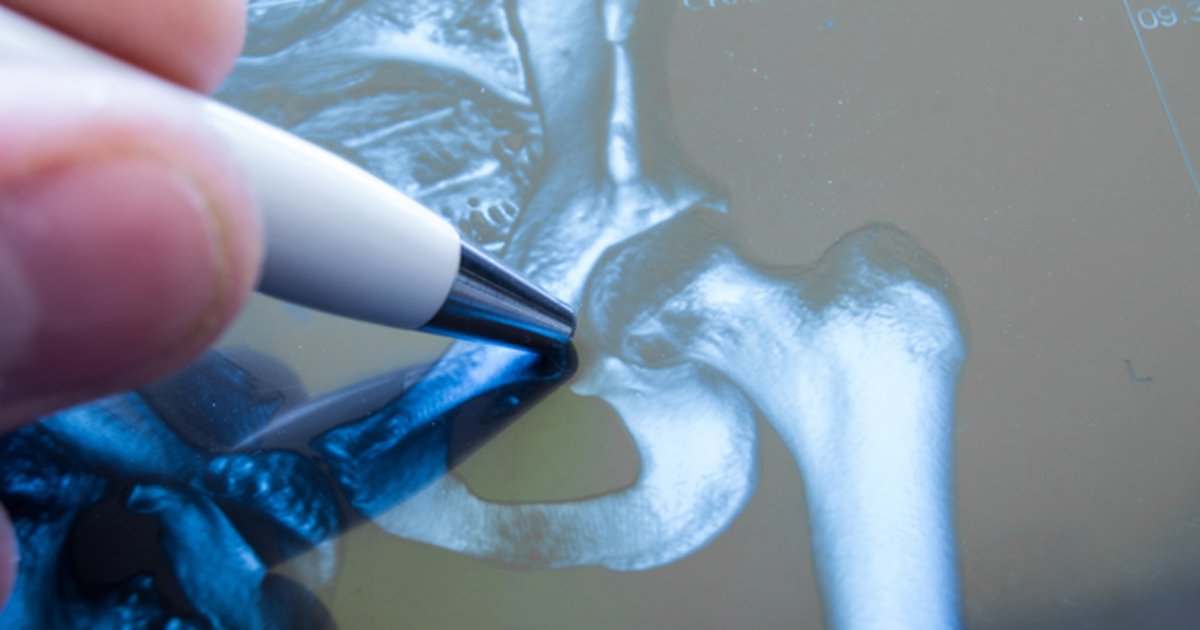August 18, 2025
3 min read
Key takeaways:
- The TRAVERSE fracture substudy found testosterone therapy was tied to a 43% higher fracture risk than placebo.
- Study population, comorbidities and behavioral change may have contributed to the increased risk.
Testosterone therapy should not be used as the sole medication to lower fracture risk for men with hypogonadism, but more research is needed on how the therapy impacts bone health, according to a speaker.
As Healio previously reported, one of five substudies in the TRAVERSE trial compared fracture risk for men aged 45 to 80 years with hypogonadism and with preexisting cardiovascular disease or at high risk for CVD receiving testosterone gel (AbbVie) vs. those receiving placebo. The substudy, which was published in The New England Journal of Medicine in 2024, found men receiving testosterone had higher risk for all clinical fractures compared with those receiving placebo (HR = 1.43; 95% CI, 1.04-1.97).

The TRAVERSE fracture sub-study found testosterone therapy may be tied to an increased risk for fractures, but more research needs to be conducted. Image: Adobe Stock
During a presentation at the Androgen Society annual meeting, Bradley Anawalt, MD, professor and chief of medicine at University of Washington Medical Center, discussed how the findings from TRAVERSE differ from previous studies, and said more research is needed.
“At this time, we cannot recommend testosterone therapy as the sole pharmacologic intervention to decrease fractures in hypogonadal men at high 10-year risk of fracture,” Anawalt said during a presentation. “There is strong mechanistic evidence to suggest that testosterone treatment decreases risk for fractures in men with hypothalamic-pituitary disease as the etiology, which is very different from the TRAVERSE population. There’s also strong mechanistic evidence to suggest that testosterone treatment decreases fractures for men with severe hypogonadism.”
TRAVERSE vs. other studies
Anawalt said although testosterone therapy was tied to increased risk for fractures in TRAVERSE, the incidence of fractures was low for both groups. Of the participants, 3.5% of the testosterone group and 2.5% of the placebo group sustained a fracture.
Another potential cause for the increased fracture risk with testosterone may be due to the study population. Anawalt said TRAVERSE did not enroll men with hypothalamic-pituitary-thyroid axis disease or men with a total testosterone of less than 100 ng/dL. Anawalt said earlier studies examining testosterone therapy’s impact on bone mineral density have shown men with a lower testosterone at baseline experience greater BMD increases.
“When you look at the TRAVERSE trial, these men did not have classic hypogonadism, they didn’t have severe hypogonadism and we don’t know what their BMD was,” Anawalt said.
Other confounding factors may have been baseline BMI and diabetes. Anawalt noted the TRAVERSE study group had a mean BMI of 35 kg/m2.
“Osteoporosis is more often seen in patients with high BMI, because obesity affects the quality of bone and leaves you predisposed to fracture,” Anawalt said.
Additionally, Anawalt said about 30% of TRAVERSE participants had diabetes, which has been associated with lower BMD.
In an analysis of fracture risk over time, Anawalt said a higher cumulative incidence for fractures was seen with testosterone vs. placebo almost immediately in the trial and persisted for its duration. Anawalt said behavior change may have been a reason for the increased fracture risk.
“That can’t be due to changes in bone density or bone quality,” Anawalt said. “It has to be due to something else to have those curves separate so quickly.”
One limitation of the trial may be using any fracture as the primary endpoint, Anawalt said. He noted most osteoporosis trials only collect classic or low-trauma osteoporotic fractures as a primary endpoint. No data were provided on fracture trauma in TRAVERSE, but Anawalt said the number of classic osteoporotic fractures, which included vertebral, hip and wrist fractures, was nearly identical in the testosterone and placebo groups in the trial.
Another trial needed
Anawalt presented data from other studies that showed testosterone therapy may provide stronger bone health benefits than placebo for men. T4Bone, which was a substudy of the T4DM trial published in 2021 in The Journal of Clinical Endocrinology & Metabolism, examined BMD among men aged 50 to 74 years with testosterone deficiency and impaired glucose tolerance or new-onset type 2 diabetes receiving 1,000 mg testosterone undecanoate (Reandron, Bayer) or placebo every 3 months for 2 years. The study showed men receiving testosterone had a 3.3% greater rise in areal BMD at the lumbar spine, a 1.9% areal BMD rise at the top hip, and a 1.3% greater increase in femoral neck areal BMD than the placebo group at 102 weeks. When volumetric BMD was measured, men receiving testosterone had about a 3% greater rise in total volumetric BMD at both the tibia and radius than the placebo group.
Anawalt said the primary outcome of the TRAVERSE fracture substudy and some of the questions arising from it raise the need for more fracture outcome studies for men using testosterone therapy.
“We should enroll men with low total and free testosterone,” Anawalt said. “For fractures and all other clinical outcomes, clinical trials should consistently use 264 ng/dL, which was the threshold used in the T trials, or 300 ng/dL, which was the threshold used in TRAVERSE. … We should enroll high-risk men, those with history of a low-trauma fracture or those with a [BMD] T-score of less than –2.5.”
Anawalt said future trials should compare testosterone with alendronate rather than placebo, and that data should be collected on behavioral change.
References:
Ng Tang Fui M, et al. J Clin Endocrinol Metab. 2021;doi:10.1210/clinem/dgab149.
Snyder PJ, et al. N Engl J Med. 2024;doi:10.1056/NEJMoa2308836.










